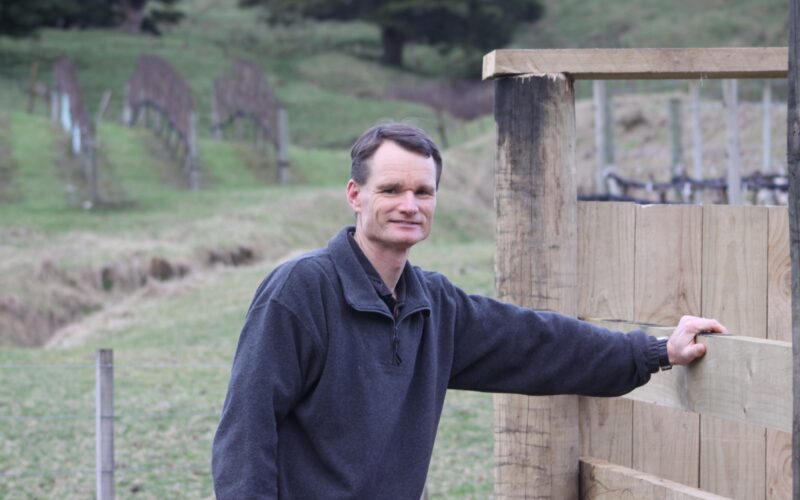Over the next two weeks, starting from March 11, the Farmers Weekly team unpacks what the drench resistance threat means for the sector, from revisiting farm systems to heeding the sheep farmers whose experience could offer a solution.
High-earning pet treatments are drawing animal health companies’ research away from pastoral parasites, with little likelihood any new drench actives will counter rising resistance in the near future.
Animal health bosses have delivered a uniformly negative response to any hopes farmers may have had for a chemical white knight to stave off resistance.
“There is nothing new on the horizon and unlikely to be. There is research going on, which we are involved in with respect to parasites, but that is across all species,” Paul Fitzpatrick, head of Boehringer Ingelheim Animal Health NZ, said.
There is nothing specific to ruminant parasites, and this reflects a swing that has occurred in the past decade in the global veterinary animal health profit centres.
Almost two-thirds of the market now sits in treatments for companion animals.
Yahoo Finance reports the global companion animal health market is valued at US$22.7 billion (about $37bn) and is experiencing compound annual growth of 10%.
“That is being reflected in the New Zealand landscape, and covid accelerated it,” Fitzpatrick said.
“Meantime the reality is that for dairy, beef, and sheep in NZ, the numbers are going down, not up.”
His view is shared by Elanco’s marketing manager Ben McFarlane.
McFarlane said large multinational animal health companies are less focused on pastoral parasite controls, with the focus going on high-margin pet products.
Both bosses agreed that any new actives are only likely to come incidentally from work in the companion animal market.
Fitzpatrick pointed to Australia, where MSD has just launched the first orally administered lice control treatment, Flexolt, for sheep. Its roots lie in a new novel active fluralaner, developed with the companion animal lice control market in mind.
The strong growth segments in animal health also lie elsewhere, including pain management and natural products.
Fitzpatrick is adamant farm management practices running intensively grazed large numbers of single class animals are going to have to change.
“They will have to think of other ways, that includes changes to stock classes, pasture, grazing patterns, the whole system on a farm-by-farm basis, season by season.
“Systems like techno grazing in Hawke’s Bay, that’s something people will have to look at changing going forward.”
Elanco markets Zolvix, a newer active – but it has been constrained by supply shortages this season and the company is shying away from marketing its cattle drench version until supply improves.
Despite having a new active, McFarlane cautioned there is always a risk the resistance issue now experienced will only be repeated with such new actives, unless farm practices change.
“There is a need for a larger conversation on how farmers can use all drenches more responsibly.”
McFarlane also said there is a challenge in educating vets on drench use.
“They understand the science of it, but to get on top of resistance requires a farm system conversation, and that is a challenge, getting everyone on the same page.”
He also estimated there are a greater proportion of farmers not faecal egg count (FEC) testing, particularly for cattle parasites.
“My feeling is there is a lot of work focused on getting better diagnostics, but still not enough farmers taking advantage of them. FEC in cattle is not as accurate as with sheep, but it’s still better than nothing.”
The industry has been accused of using sales incentives to move drench, hastening use of too much drench of the wrong type.
McFarlane said it would be hard to determine if incentivisation had contributed to use of the wrong brand, or the wrong active on farms.
Zoetis’s vet operations manager Clive Bingham said triple resistance in cattle is no surprise, given cooperia worm has already been resistant to the macrocyclic actives for a long time.
He cautioned that work by Massey University parasitologist Dave Leathwick identifying cattle triple resistance was based on only four farms, but agreed intensive “techno” and heifer grazing systems are highly vulnerable.
“However it can be hard to get farmers to change their systems, it has to be something drastic to prompt that after they have invested in that particular system.”
After observing farm systems overseas, he said New Zealand is proving to be well ahead in its awareness of drench resistance and trying to deal with it.
“The US, for example, is well behind the eight ball and not recognising they even have an issue.”
He said it may be that as these larger countries catch up, multinational drench companies may focus harder on developing new actives that benefit NZ as well.
Meantime Zoetis is stepping away from the traditional incentivised drench purchase model with its new Change it Up campaign due for launch.
“It is about starting a conversation with vets and farmers.
“It is that it’s not all about drenching – that there are four key areas to focus on for parasite control: these are refugia, nutrition, pasture contamination and having an effective drench programme.”






